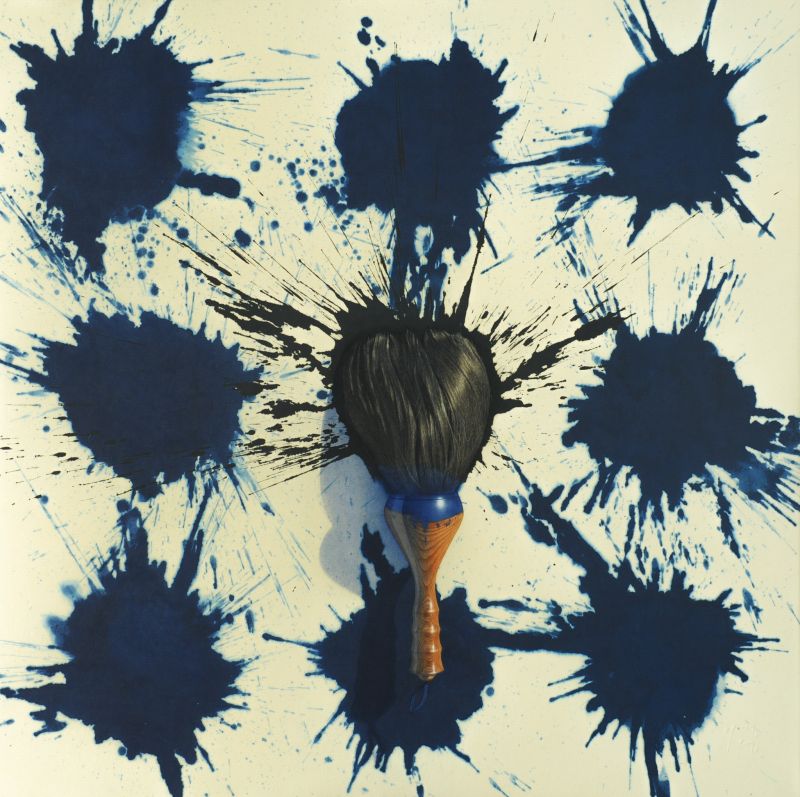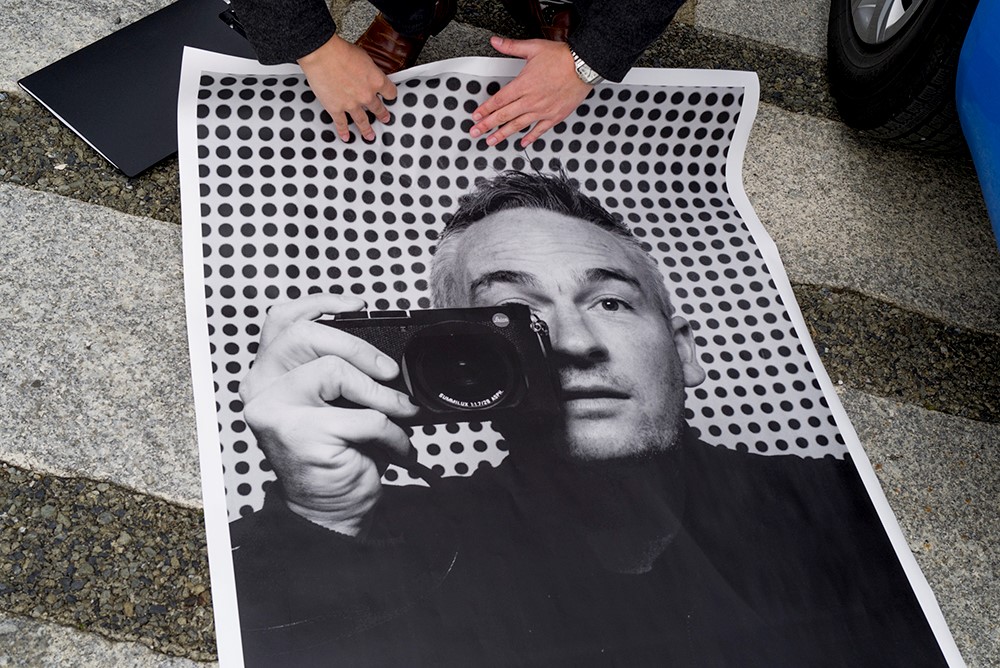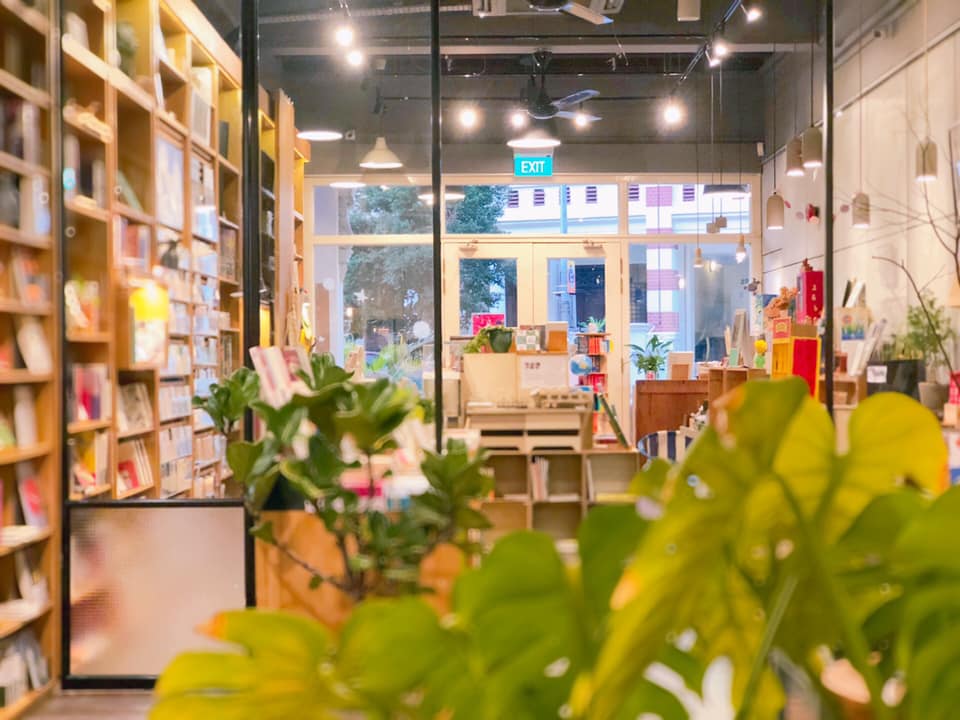They say that good things are worth waiting for; and indeed, the wait for the next exciting art exhibition in town has given us something great. Minimalism: Space. Light. Object. takes over not one but two major art institutions—the National Gallery Singapore (NGS) and ArtScience Museum (ASM)—for a landmark exhibition celebrating one of the world’s most revered and misunderstood art movements.
From now through Apr 14, 2019, the art show—the first of its scale in Southeast Asia—will chart the origins and evolution of minimalism, in 150 works loaned from more than 80 artists and composers all over the world. The term today might perhaps be received with a touch of cynicism, thanks in part to a global inner circle of hipsters championing a specific way of life. But the guiding philosophies of minimalism extend far beyond furnishing your house in Muji (if you even dare own more than just a few possessions). With its roots in the visual arts scene of early 1960s America, minimalism rose in prominence as a reactionary movement against the messy social change of the era. In the dual-museum showcase here, the intention is narrowed further to a specific focus on contemplating what is physically in front of and around us, in the present moment; as opposed to referencing the happenings of the world outside.
For a comprehensive understanding of how minimalism progressed, start at the National Gallery Singapore. Your tour opens with entirely black works like Mark Rothko’s No.5, intended to move away from Victorian ideas of painting; then, cubic forms and straight lines grow into less rigid textures, and 3D objects made from progressively softer materials. Mona Hatoum’s Impenetrable is a fun one—a waterfall-like cube of black that turns menacing when approached up close; the straight lines are actually steel barbed wire meant to keep you out.
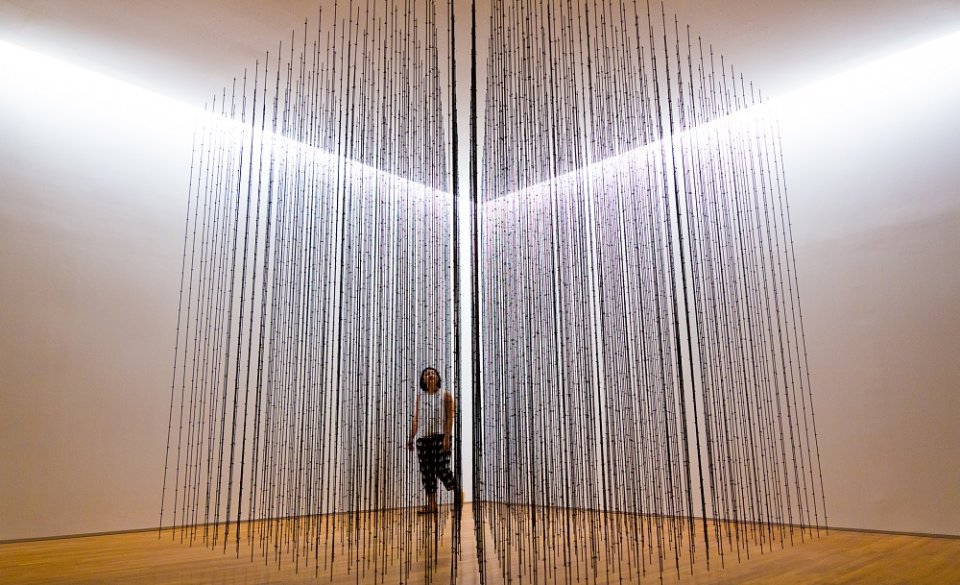
Impenetrable
We do like a spot of colour—which contrary to popular belief, fits into the movement when systematically used. Bound to be hits at NGS are Peter Kennedy’s Neon Lights Installations, one of the earliest examples of installation art in Australia, and Olafur Eliasson’s Room for one colour. The former simulates walking through a rainbow; the latter artfully employs monofrequency lamps that suppress all colours except yellow and black, so your view instantly becomes filtered through a real-life sepia tone. Aside from being weirdly unsettling, Eliasson’s work is meant to demonstrate that our perception changes with our environment.
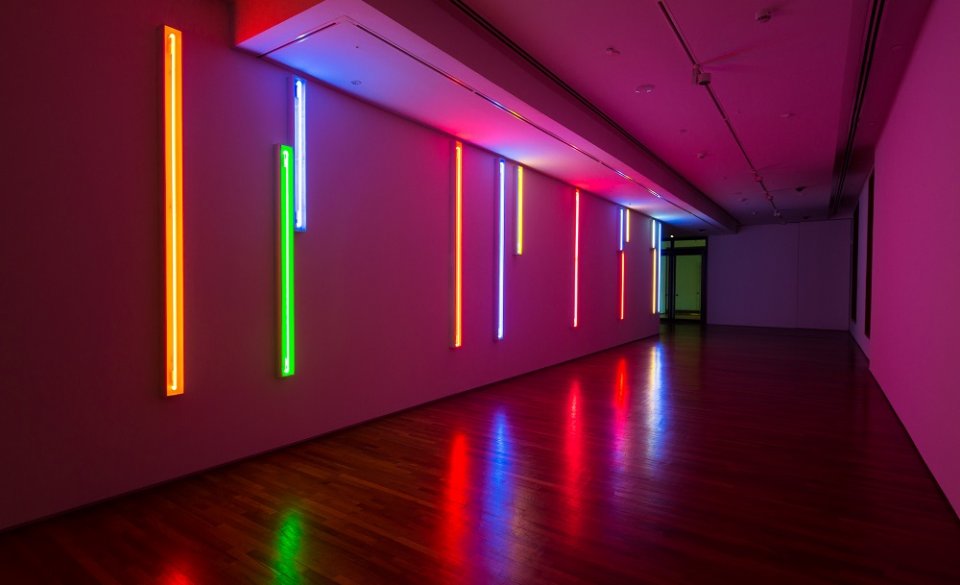
Neon Lights Installations

Room for one colour
In keeping with bringing attention to one’s immediate environment, works like Charlotte Posenenske’s Series D (Suqare Tubes) manipulate the surroundings of where the artwork is located each time. Comprising cardboard modular structures, the pieces are assembled to respond to the architecture of the space—so no two presentations are ever the same.
In a similar vein, British artist Martin Creed’s Work No. 1343 is a blink-and-miss-it situation that’s one of our favourites. Presented for the first time after its 2012 debut in the UK, the installation involves swapping out the furniture of a space, and in so drawing attention to the ordinary objects and everyday environments that usually go unnoticed. Here in Singapore, it’s the Gallery’s cafe space that’s been transformed—with unique crockery and furniture donated in an open call by fellow Singaporeans. Consider it Creed’s 21st century response to the minimalism approach of seriality and repetition; the cafe will remain in this kooky setup, entirely operational, until the end of the exhibition.
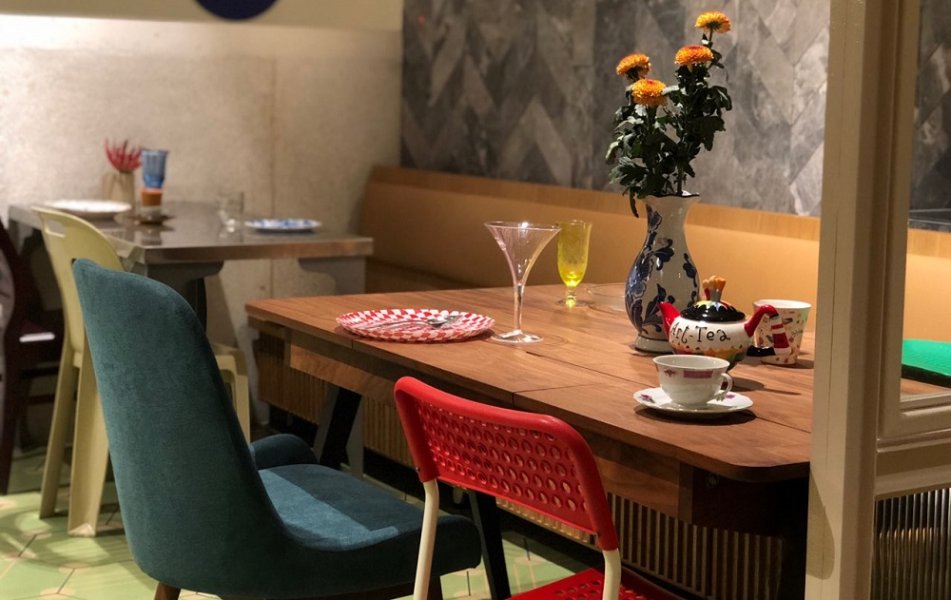
Work No. 1343
Then there are more conventional takes on minimalist art—like Anish Kapoor’s big, black Void (the artist is most notoriously known for having patented all artistic use of the colour “blackest black”); or Nam Jun Paik’s Zen for Film—a single loop of blank white light projected on a wall. Paik’s work is in fact an opener for the Zen gallery at NGS, a special section devoted to Buddhist thought and the practice of Zen meditation. As such, you’ll find works like Ai Wei Wei’s inimitable Sunflower Seeds—a room of unique seeds painstakingly handcrafted by ceramic artisans from China, put together as a challenge against the “Made in China” narrative of mass production.
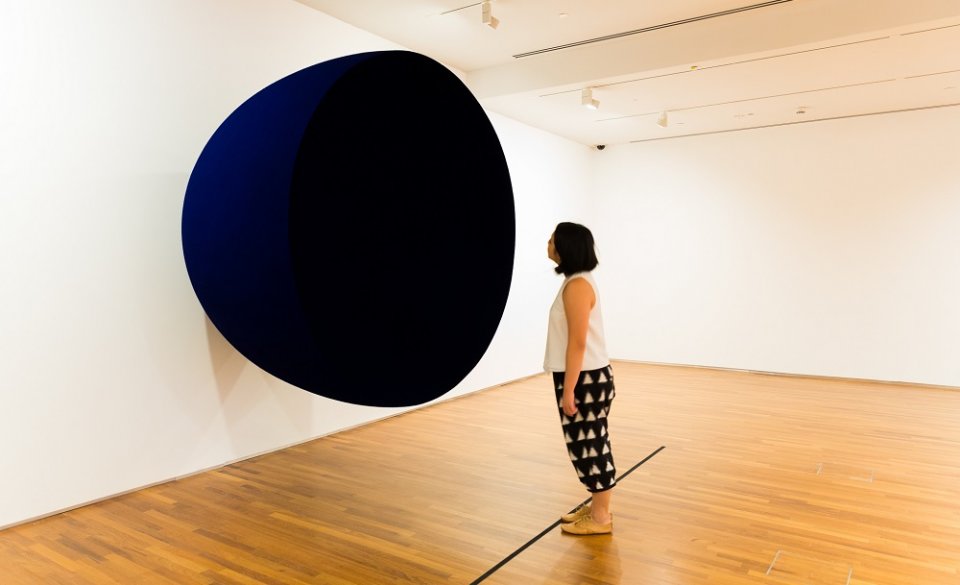
Void
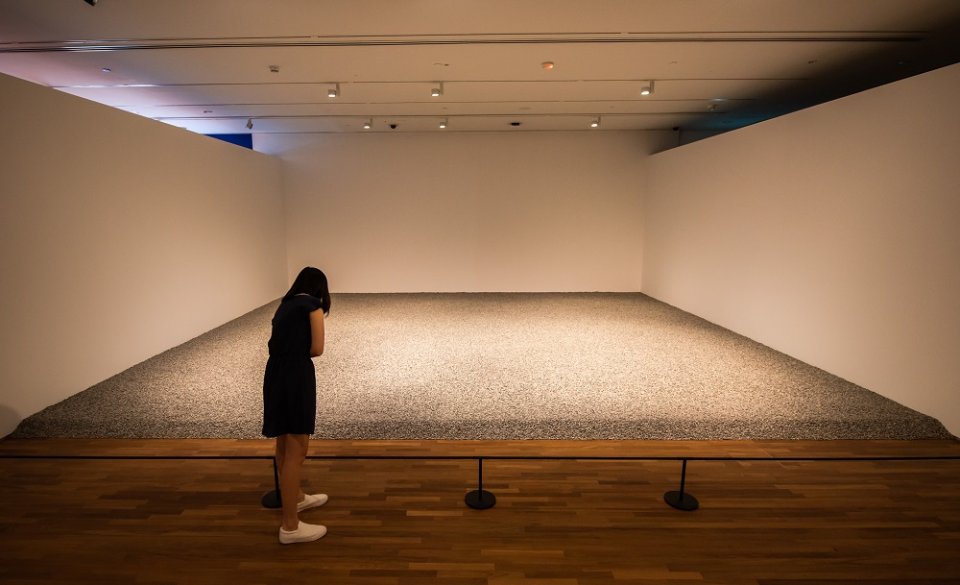
Sunflower Seeds
Shedding light on Asian interpretations of minimalism, this focus on Zen Buddhism is a core tenet linking the works at NGS and ASM. Across the bay, the smaller showcase at ArtScience is curated as a response to the NGS show, with an added intention of investigating the origins of minimalism before the movement in America. The presented artworks meditate on emptiness and nothingness, with a focus on simple materials, the ephemeral, and pure, intense concentration.
Opening work + and –, again by Mona Hatoum, simultaneously creates and erases concentric circles in the sand, in a hypnotic tug-of-war between existence and non-existence—inspiration clearly taken from Hatoum’s visit to a Japanese zen garden. In the next room, an intensive performance piece titled Ink Feeding 20150506 by Zhang Yu focuses purely on a sole performer as he laboriously pours diluted ink around a stack of paper. The slow process eventually results in a minimalist cube, but first draws attention to the environmental factors creating it—temperature, humidity, the dilution of ink.

+ and –
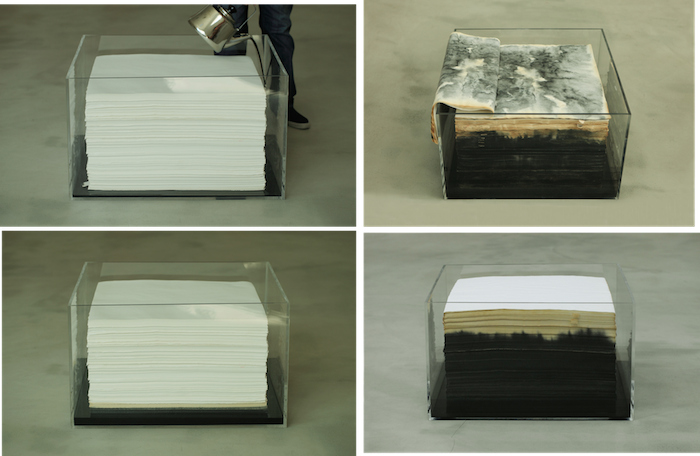
Ink Feeding 20150506. Photo credit: Zhang Yu
But it isn’t all agonising silences and sand either. The textures and pops of colour return in Anish Kapoor’s To Reflect an Intimate Part of the Red, which brilliantly uses the intense colours of the abstract sculptures, to somehow draw attention to the empty spaces between the objects—highlighting the nothingness present over the actual sculpture itself. The final room next door holds another attractive Olafur Eliasson work: Seu corp da obra (Your Body of Work) puts together a picture-worthy labyrinth of coloured translucent sheets, but also allows visitors to wander through the space experiencing many variations and layers of colour; so that visitors become a part of the installation.
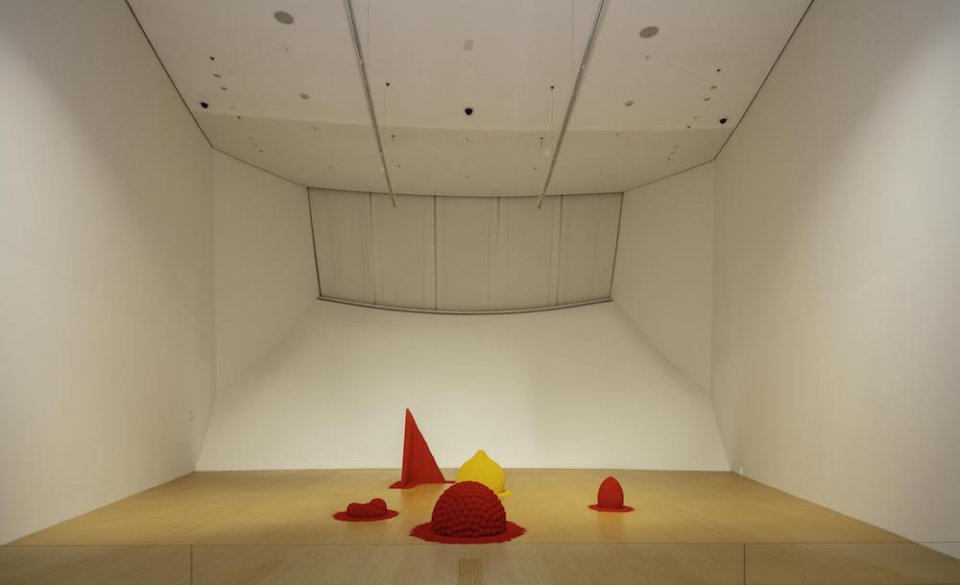
To Reflect an Intimate Part of the Red
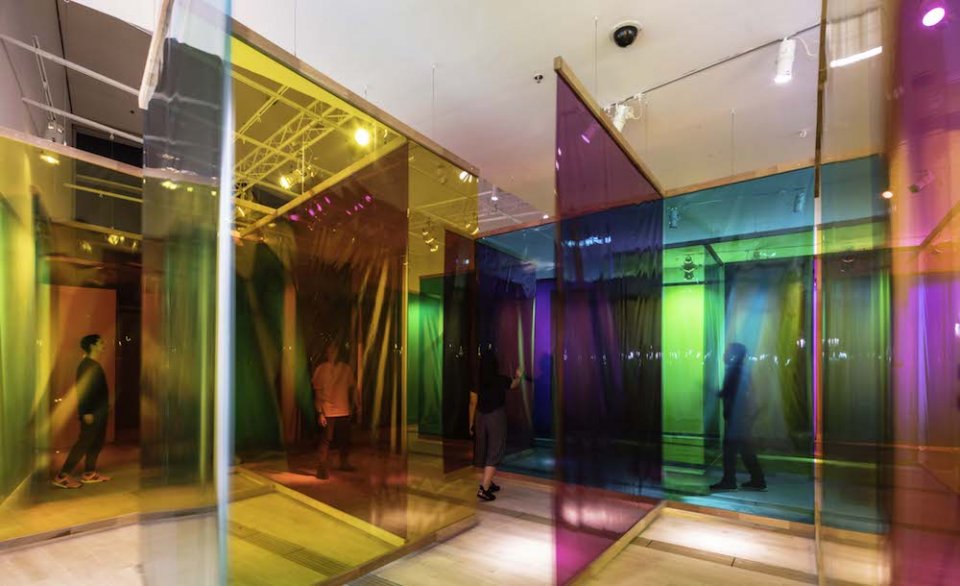
Seu corp da obra (Your Body of Work)
The ASM exhibition finishes down in the basement, with contemporary artists responding to the minimalist aesthetic that was set in the ‘60s. Morgan Wong’s ongoing Time Needle Series, is a row of repeated needles based on the Chinese saying “With constant grinding, an iron bar can become a needle”—its simple repetition is one of the clearest hallmarks of minimalism.
Bonus:
Should you choose to wander back to the National Gallery, definitely make a stop at one of the free-to-enter public galleries in the basement. Tatsuo Miyajima’s breathtaking Mega Death fills an entire room with blue LED numerals that count down in a cycle from one through nine. Each flashing digit represents a human life, ticking from birth to death; at random intervals, the counters sync and the room blacks out, symbolising the loss of all these lives at once—it’s Miyajima’s piercing look back at the destructive wars of the 20th century. Still, not all is lost; slowly the numbers will flicker back to life and restart the counter, as a metaphor for a Buddhist-like rebirth. Pardon our goosebumps.
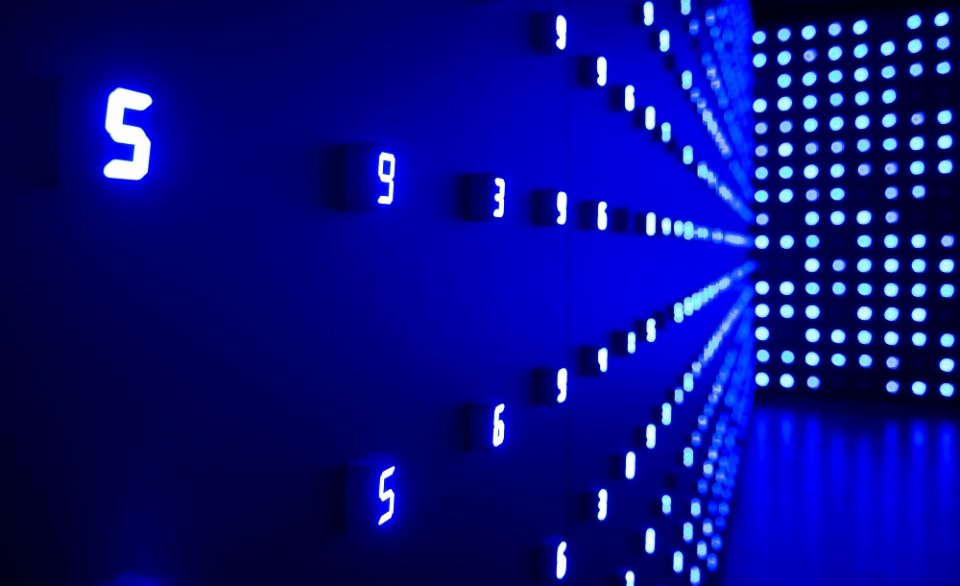
Mega Death
Minimalism: Space. Light. Object. is on show from now through Apr 14, 2019 at National Gallery Singapore and ArtScience Museum. Tickets and more information available here.



